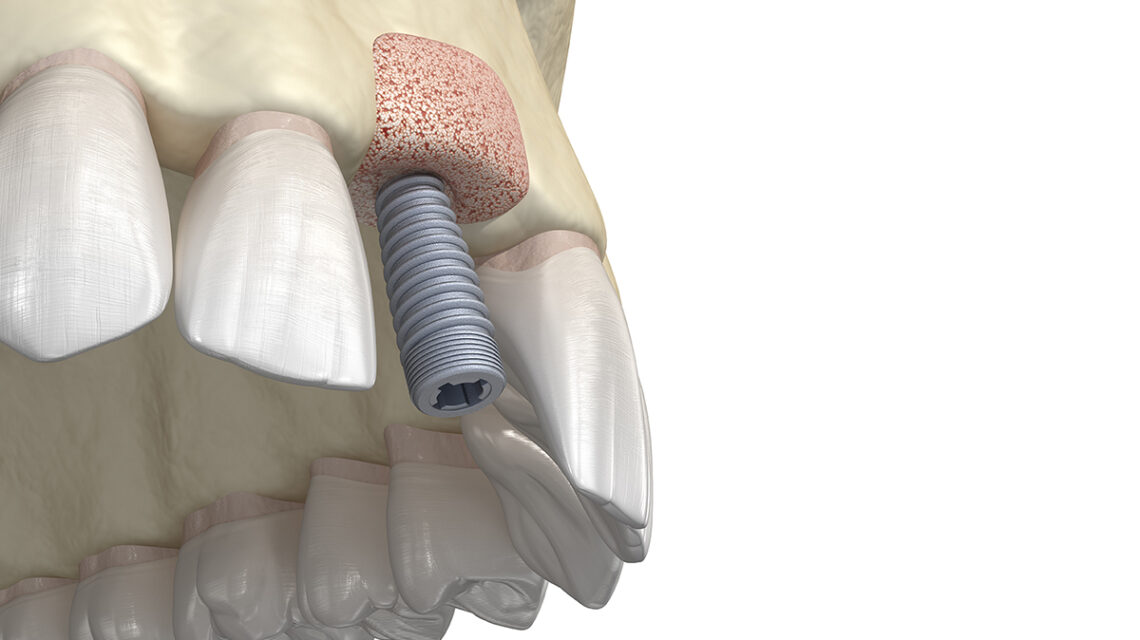Dental implants play a significant role in modern dentistry. Today, many dentists use it as the most effective treatment for missing teeth resulting from trauma, gum disease, infection, or severe tooth decay. You may know dental implants, but you may not know it may require a bone graft.
Table of Contents
Why You May Need Bone Grafting
Dental implants need a base to hold on to. Bone grafting is necessary to make the jaw’s bone tissue stable so it can support the implant. The dentist will drill a hole into your jaw bone and insert a titanium post to help anchor the fake tooth so it can remain in place. This procedure cannot succeed if your jaw is unstable or too narrow to hold the post and fuse.
Your dentist will recommend a bone graft if you had a severe injury to your jaw or have severe tooth decay that has affected your jaws. In either case, you might have lost your jaw bone tissues because of deterioration and atrophy.
A deteriorated jaw bone is weak, and the pressure you exert on it as you eat can further damage it. If a dental implant is inserted directly into a weak jaw bone, it will suffer from your continual pressure of chewing, and it will eventually fail.
You can visit Smile Angels of Beverly Hills so that Dr. Bruce Vafa can determine whether you have sufficient jaw bone tissue to support dental implants. If you don’t have enough bone, the dentist will have to carry out bone grafting on your jaws.
In this procedure, the dentist will remove bone pieces from other parts of your body, and combine it with bone pieces from an animal or a human cadaver, and add this combination to your jaw to improve its bone mass.
Who Should Avoid Bone Grafting?
If you are an excessive smoker, this procedure may not be right for you. This is because your body may reject the graft, and your recovery may also take longer than necessary.
Again, if you have periodontal disease, your dentist will advise you against this procedure, unless you get treated of the disease first. Having a periodontal disease may lead to gum infection, making your success with bone grafting slim.
Lastly, if you have diabetes or other disorders such as heart disease, avoid bone grafting. If you have to undergo the procedure, have a discussion with your dentist on the possible outcomes.
The Procedure for Bone Grafting
When you have to undergo the dental implanting procedure, including dental grafting, it isn’t a must that you have to get admitted. The dentist will treat you as an outpatient.
An IV sedation or anesthesia will be necessary before the procedure to prevent you from feeling any pains. The dentist will clean the area, then make a small incision through your gum tissue. This incision exposes where to carry out bone grafting.
If the bone meant for grafting comes from your body, the dentist will make another incision where he wants to harvest the bone tissue. After collecting the bone tissues, the dentist will place it at the sections to be fused.
Additional repair work may be necessary to repair any damaged tissues in the surrounding area. The dentist will also close the place where he made the second incision.
You may require several weeks to recover from this surgery. So before placing the dental implants, your jaw bone may need to regenerate to a level where it can support the implants. After placing the implants, you’ll again require several weeks to recover before the crown and abutment are attached.
What Types of Bone Grafting Are Available?
There are four types of bone grafting, including the sinus lift procedure, block bone graft, socket graft, and lateral ridge preservation graft.
Sinus Lift Procedure
This procedure is usually done on the upper jaw. In this procedure, equine bones are used on the upper jaw to hold the dental implants. Equine bones are the most suitable because they don’t dissolve easily, and they are like those of humans.
Block Bone Graft
When your jaw suffered a severe injury, it may have some defects. The dentist may take a sizable piece of bone behind your jaw then use titanium screws to hold it in position until it fuses with the other bone tissues. The dentist will then insert the dental implants after the tissues, the gums, and the bone heal.
Socket Graft
Socket grafting is a very common procedure. You can undergo this procedure when your alveolar bone needs protection against deterioration. In this procedure, a new bone is placed in the space where a tooth has been removed. This bone forms a sturdy base that can support an implant.
Lateral Ridge Preservation Graft
If your jaw isn’t wide enough to support dental implants, it may need to be expanded. In this case, a human bone will widen the jaw so it can be ready for the dental implant.
Conclusion
Before you go for bone grafting, let your dentist assess your medical condition to determine whether you are the right candidate for this procedure. The staff at Smile Angels of Beverly Hills have all the equipment, tools, knowledge, and expertise to ensure you’ll get the best treatment. They’ll make the procedure and the recovery process to be as easy as possible.



